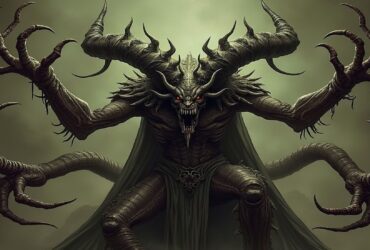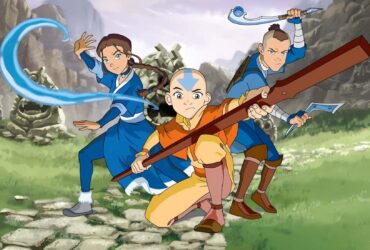Key Takeaways
- Ghost of Yotei aims to establish the Ghost series with multiple protagonists, focusing on the concept rather than one character.
- The challenge for Ghost of Yotei lies in creating a distinct narrative arc for Atsu that doesn’t mimic Jin’s journey.
- To avoid feeling repetitive, Ghost of Yotei must evolve Atsu’s development cycle, contrast origins, themes, and enhance player agency.
It was initially believed by many that Ghost of Tsushima would receive a direct sequel continuing Jin’s story. However, Ghost of Yotei has now taken the stage, instead promising to make the Ghost series a franchise featuring various protagonists and the Ghost as an idea rather than an individual. Set in 1603 Hokkaido, over 300 years after Jin Sakai’s journey, Ghost of Yotei introduces a fresh protagonist, Atsu, who takes on the mantle of the Ghost in a vastly different cultural and geographical setting. While this premise offers plenty of room for innovation, it also presents a challenge: ensuring that Atsu’s narrative arc and transformation into the Ghost are distinct from Jin’s evolution.
If Ghost of Yotei retreads too much familiar ground, it risks feeling like a reskinned version of its predecessor, potentially undermining its impact as a unique addition to the series. To avoid these pitfalls, Ghost of Yotei must carefully balance honoring the original game’s themes with introducing fresh storytelling and character dynamics. Based on what has been revealed so far, it looks like Ghost of Yotei is primed to repeat Ghost of Tsushima‘s trope, but it doesn’t have to be that way.

Related
Ghost of Yotei Seems Primed to Follow Zelda: Tears of the Kingdom’s Lead with One Mechanic
Much of Ghost of Yotei is mysterious, but the game’s trailer hints at potential inspiration from Tears of the Kingdom’s gameplay.
Ghost of Yotei’s Narrative Needs to Distance Itself From Tsushima’s
There Is Potential for Ghost of Yotei’s Narrative to Be Too Much Like Tsushima’s
Now that Ghost of Tsushima has been turned into a full-blown franchise with Ghost of Yotei, as opposed to the first game receiving a direct sequel, it likely means Ghost of Tsushima has set the pace for the series’ narratives moving forward. Specifically, should each Ghost game serve as an origin story for a new protagonist, each of these origin stories could run parallel to Jin’s in terms of his journey of growth from samurai to Ghost. As far as Jin’s story goes, he becomes the Ghost out of what he believes to be necessity, that he might be able to more effectively infiltrate and weaken the Khan’s hold on Tsushima rather than attempting to face him directly and thereby lessen his chances of success.
In the same way, with the franchise now using the concept of the Ghost rather than limiting the character to Jin himself, it seems likely that Ghost of Yotei‘s Atsu will end up following a similar development cycle. If Ghost of Yotei does go that direction with its narrative, something would happen to Atsu that would force her into a corner where she has no choice but to become the Ghost, either to survive, get the upper hand on her enemies, or both. So far, it has been confirmed that Atsu’s story is one of “underdog vengeance,” which makes it even more likely to bear strong similarities to Jin’s. In short, Ghost of Yotei‘s narrative is arguably already showing early signs of being too much like Ghost of Tsushima‘s.
Ghost of Yotei Should Evolve the Development Cycle for Its Protagonist
To avoid following a similar narrative arc to Ghost of Tsushima‘s exploration of the concept of the Ghost, Ghost of Yotei‘s story approach would need to be carefully crafted to avoid feeling repetitive while still honoring the thematic core of the series. Presumably, Atsu will begin the game without the mantle of the Ghost and then later adopt it under extreme circumstances, much like Jin did in Ghost of Tsushima. However, to avoid feeling too repetitive, Ghost of Yotei would be remiss not to at least evolve the development cycle for its protagonist, whether it be through creating an entirely different lens through which to view Atsu, establishing unique core themes for the game, or allowing players to dramatically shape the story through their own choices.
Firstly, perhaps Atsu’s origins and motivations in Ghost of Yotei could contrast sharply with Jin’s. Instead of being a samurai tied to feudal codes, Atsu could come from a marginalized background, such as a former servant, merchant, or even an Ainu warrior. This would help contrast her own dilemmas with Jin’s, thereby setting Ghost of Yotei‘s narrative apart from its predecessor’s.
So far, it has been confirmed that Atsu’s story is one of “underdog vengeance,” which makes it even more likely to bear strong similarities to Jin’s.
Secondly, Ghost of Yotei could center around different core themes. Whereas Ghost of Tsushima saw the moral breakdown of Jin Sakai as he slowly drifted from samurai tradition, Ghost of Yotei could instead celebrate Atsu’s growth from an underdog to a powerful warrior. Finally, any expansion of player agency, which the game has been confirmed to feature, would allow players to have greater influence over the outcome of the story and therefore provide more potential for it to differ greatly from the first game.

The sequel to Ghost of Tsushima, Sucker Punch’s Ghost of Yōtei is a PS5 exclusive scheduled to drop at some point in 2025. Taking place in 1603, the story will feature a new protagonist and a new Japanese region that is far removed from Tsushima’s setting.
- Released
- 2025
- Publisher(s)
- Sony Interactive Entertainment













Leave a Reply